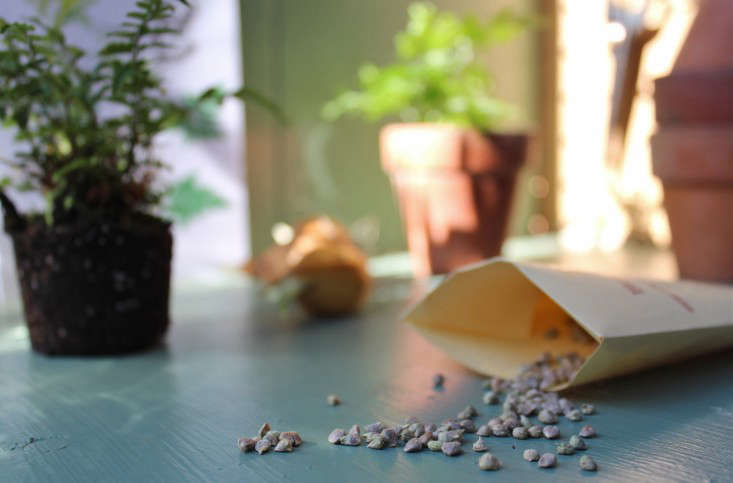I would like more Self-Blanching Snowball Cauliflower in my diet. And fewer bland, mass-produced vegetables. This is why I grow my own. For 135 varieties of rare heirloom seeds–yes, Half Dwarf Brussels Sprouts are available–I turn to Jardin Seed Co.:
James Lizardi, who founded Pasadena-based Jardin Seed Co. four years ago, believes gardeners should have a library. A seed library. Filled with rare volumes. Among the 135 different varieties of U.S.-grown vegetable and herb seeds he sells are unusual varieties such as Cherokee Trail of Tears Pole Beans, Sharlyn Melon (“fantastic, unbelievable, juicy flavor,” says Lizardi), and Crimson Forest Bunching Onion.
These vegetables have not been genetically modified. They have not been pollinated by artificial means. And you cannot buy them in your chain supermarket. If you want to taste them, you will have to grow them.
Photography by Michelle Slatalla.
Above: “All are heirloom seeds, which means they have been passed on for generation to generation for their traits–they have exceptional flavor, or they’re very hardy–and unlike hybrids, they will reproduce exactly like their parents,” says Lizardi.
Lizardi sells Boxed Seed Collections ($29.95 each), each of which has at least 12 packages of different varieties. Think of the 10 different seed collections as volumes in a library.
Above: In the Chef’s Garden Collection, which I bought last month, there are packets of seeds with names like Imperial Star Artichoke, Red Express Cabbage, Sweet Marketmore Cucumber, and Rouge d’Hiver Lettuce (Shown).
Above: Lizardi also sells memberships in a Seed-of-the-Month Club (prices range from $60 to $99, depending on whether you get a six- or a nine-month subscription). If you are a member, he will mail you seeds appropriate to your growing zone.
Above: Lizardi’s personal favorites? “I love black tomatoes,” he says. “And purple tomatoes.” Jardin Seed Co. sells an Heirloom Tomatoes Collection ($29.95) that includes a packet of Cherokee Purple Tomatoes, which are in danger of extinction.
“Unbelievably delicious,” says Lizardi, “if you like tomatoes.”
If I like tomatoes? Please.

Above: Each boxed collection comes with an exhaustive Growing Guide, with suggestions for when and how to plant each variety as well as historical facts.
It might interest you to learn that the Self-Blanching Snowball Cauliflower, a variety developed in the 1700s in Germany, “has self-wrapping leaves which shield the snow white curds from sun.” If this does not interest you, then stop reading before you learn that cauliflowers are a venerable, ancient food “mentioned in the first cookbook written in early Roman times, De Re Coquinaria, (On the Subject of Cooking), fourth or fifth century A.D.”

Above: The Italian Arugula seeds I bought should be sown outdoors one month before the last frost date (“Arugula grows quickly, so we recommending sowing rather than transplanting,” the Growing Guide advises). I will be planting them in my Northern California garden this weekend. But not near my strawberries because “pole beans and strawberries are all said to negatively affect the growth and flavor of arugula.”
Planning to grow a vegetable garden this year? For more inspiration, see:
- Seed Source: Kitzagawa Seed Co.
- A Bank for Rare Seeds in Petaluma
- 5 Favorites: Planting Pots for Starting Seeds Indoors
- Browse our Growing Guides if you’re planting cool weather crops like Spinach, Kale, or Lettuce.
















Have a Question or Comment About This Post?
Join the conversation